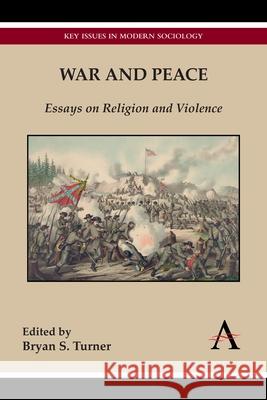War and Peace: Essays on Religion and Violence » książka
War and Peace: Essays on Religion and Violence
ISBN-13: 9781783083305 / Angielski / Miękka / 2014 / 230 str.
War and Peace: Essays on Religion and Violence
ISBN-13: 9781783083305 / Angielski / Miękka / 2014 / 230 str.
(netto: 121,75 VAT: 5%)
Najniższa cena z 30 dni: 127,05
ok. 30 dni roboczych
Dostawa w 2026 r.
Darmowa dostawa!
This collection of original essays examines the complex historical relationships between religion, war and peace. Taking Tolstoy's famous novel as its title, the book is divided into two sections. In the first, four chapters explore examples of religion and violence. These include a famous case of violence against Polish Jews by their neighbors, messianic movements in West Papua in response to external cultural and military threats, the American Protestant response to the violence of the Civil War and the ultimate defeat of the Confederate forces, and finally the religion and violence among Plains Indians within the framework of a sociological debate about "civilization." The second section examines the Quaker doctrine of nonviolence and resistance to war taxes, the diverse attempts to understand the atomic bombing of Japan and the construction of a tourist industry around Hiroshima, the role of religious identity in the laws that influence sectarian tensions in Lebanon, and finally the notion of love in the countercultures of the 1960s that were inspired by Gandhi and Martin Luther King. In his introduction and conclusion, Bryan Turner, reflecting on the analysis of the futility of war in Tolstoy's novel, looks at various explanations of the role of religion in political violence. These include the idea of a clash of civilizations, the tensions between majorities and minorities, the role of the state in promoting communal violence, and the struggle between different religious worldviews against a background of secularization.
Reflections on Leo Tolstoys "War and Peace," these original essays examine various facets of violence and human efforts to create peace. Religion is deeply involved in both processes: ones that produce violence and ones that seek to create harmony. In the war on terror, radical religion is often seen to be a major cause of inter-group violence. However, these essays show a much more complex picture in which religion is often on the receiving end of conflict that has its origin in the actions of the state in response to tensions between majorities and minorities. As this volume demonstrates, the more public religion becomes, the more likely it is to be imbricated in communal strife.











